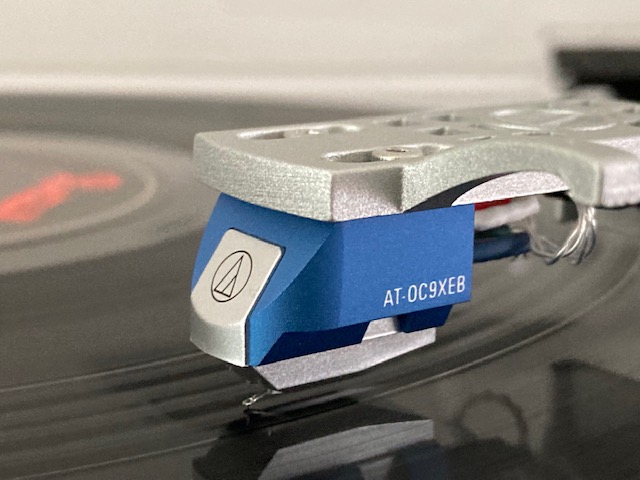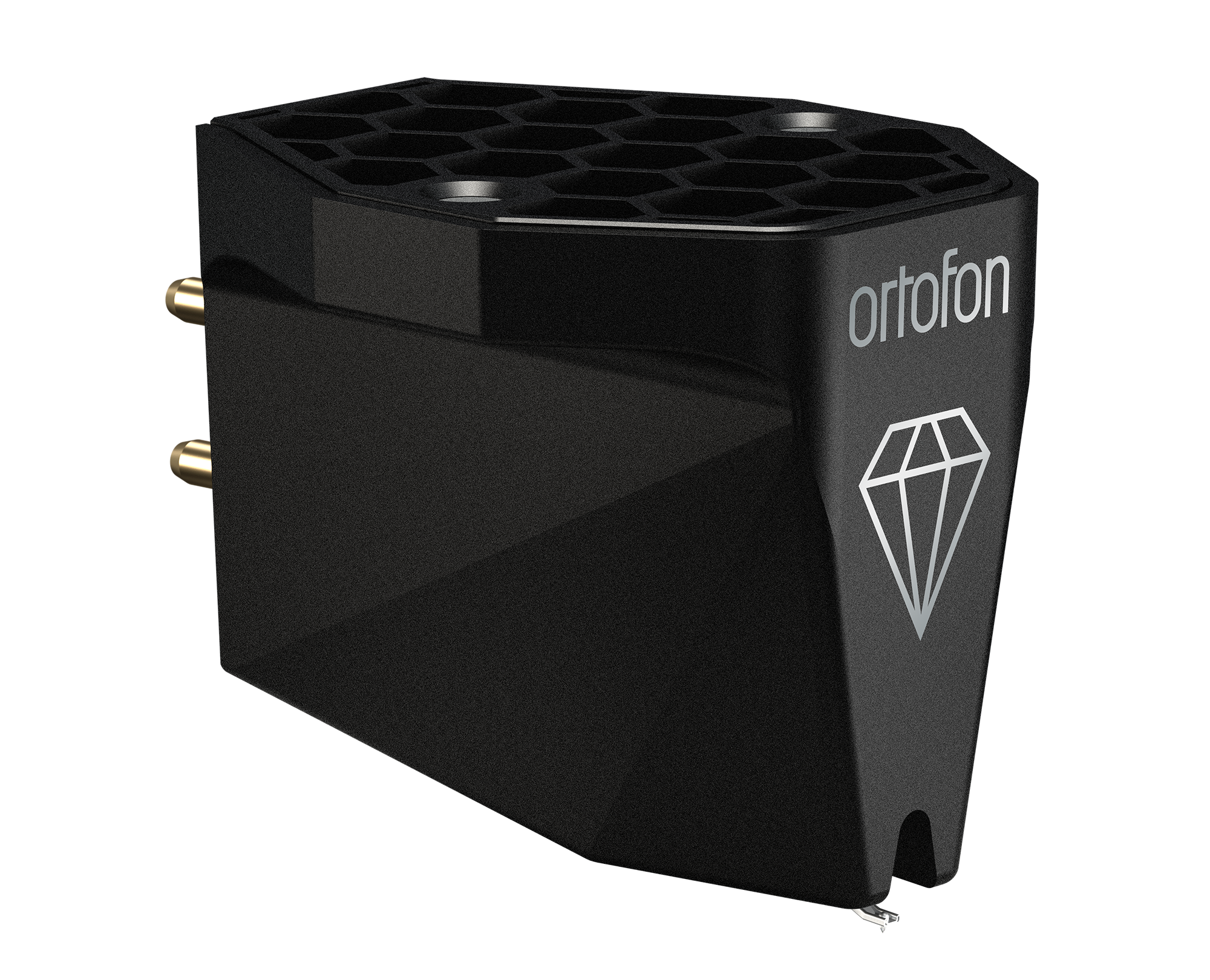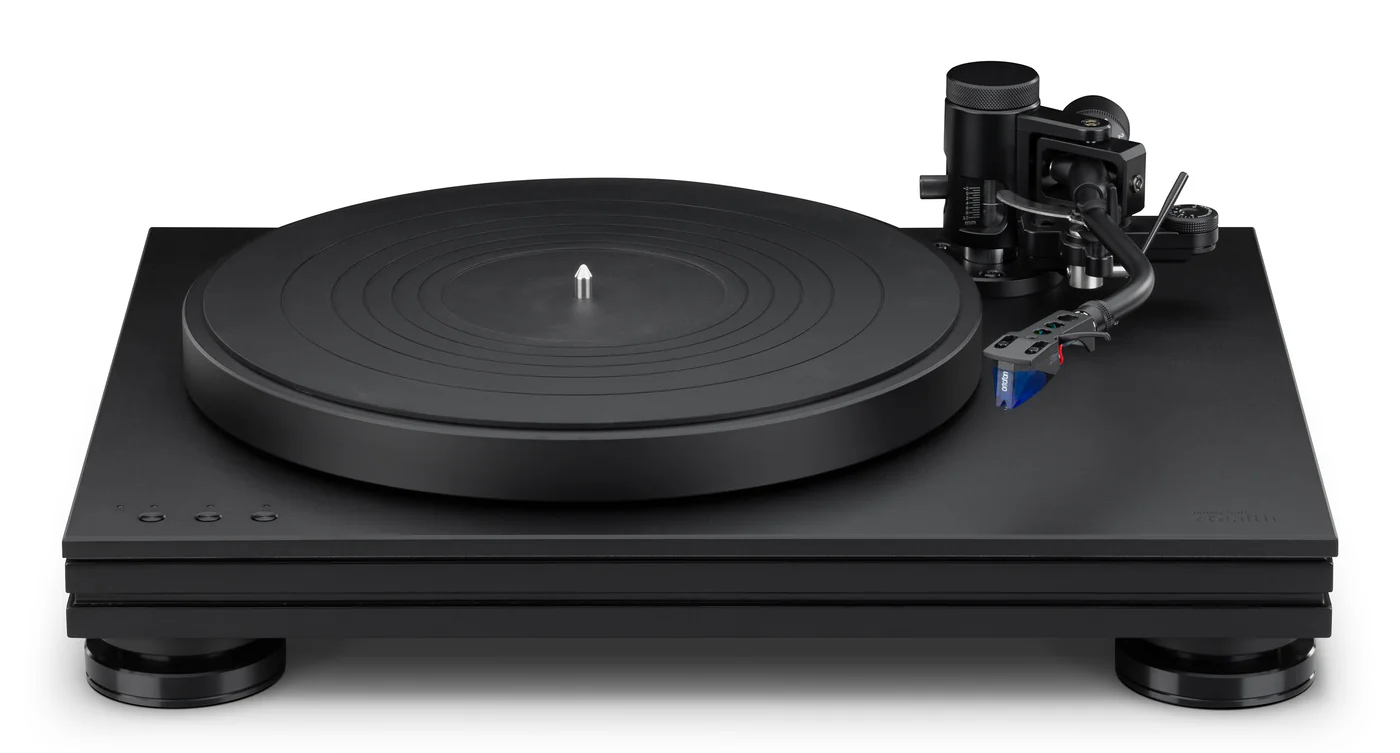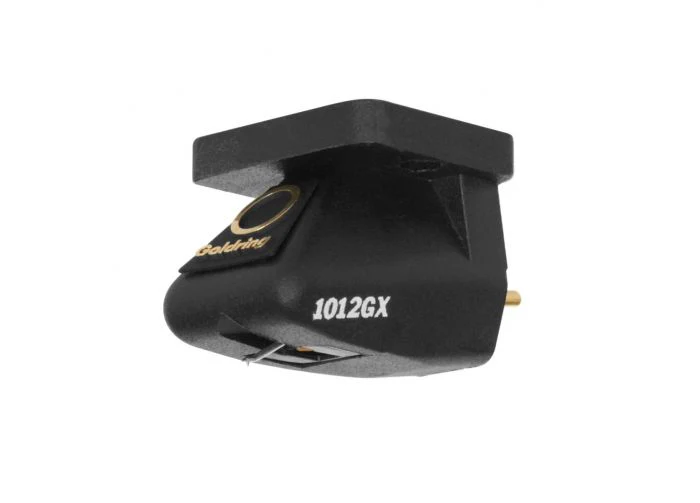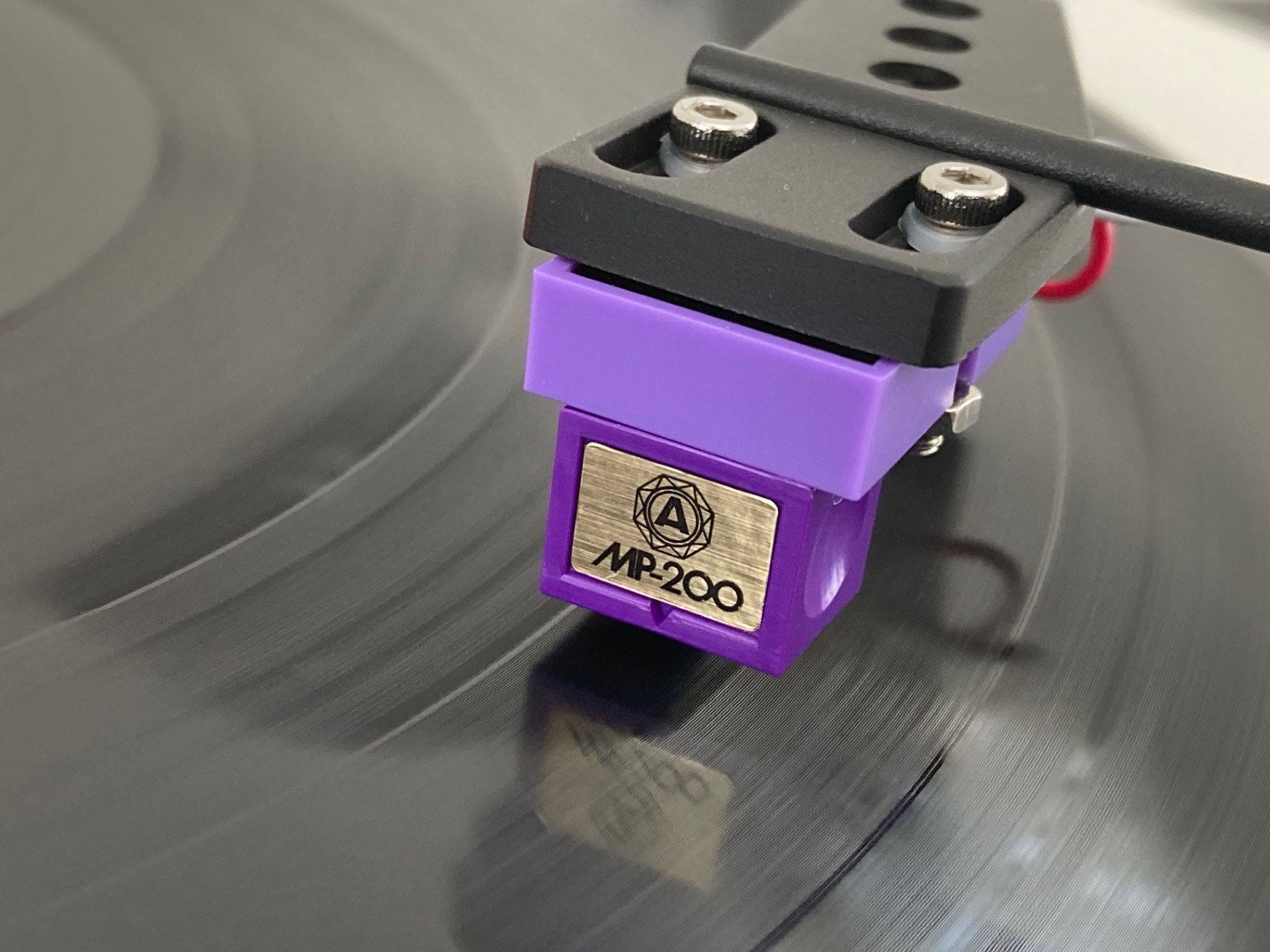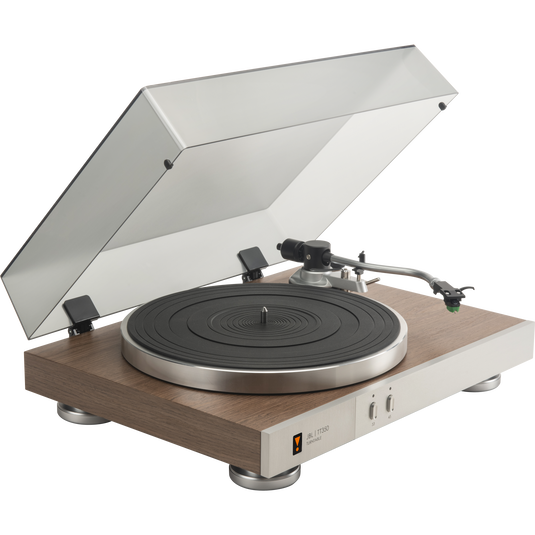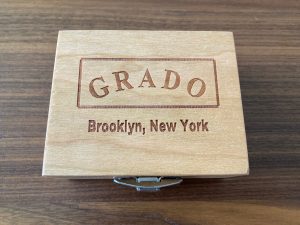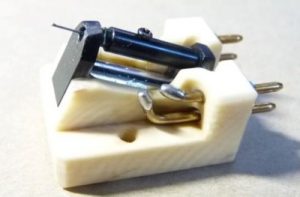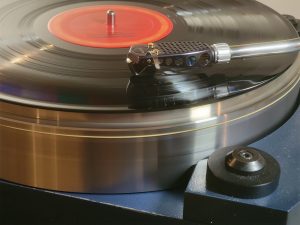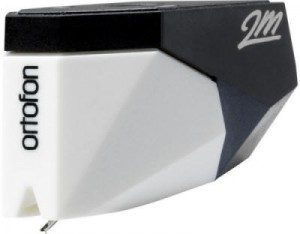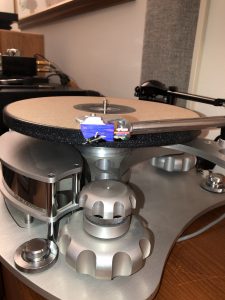Audio-Technica's least expensive moving magnet cartridge, the AT-VM95C, is a thoroughly entertaining product. While far from the last word in anything, it's a cartridge I've enjoyed on turntable and tonearm combos costing more than 100 times its price. For just $39, it tracks well and resolves in big, bold strokes that makes it just as much fun as more expensive competitors, despite a modest, bonded conical stylus that helps keep the price low. They sell a ton of them, so it's easy to find reviews and user feedback.
Contrast that with the company's entry-level moving coil cartridge, the $259 AT-OC9XEB. Specs suggest that it offers a decent value for the money: a rigid and sleek aluminum body with threaded screw holes to make mounting easy, a typically above-average bonded elliptical stylus, as well as very good frequency response and channel separation. You'd think Audio-Technica would sell a ton of these too, but judging by the sparse Google results, very few owners have much to say, and it has been similarly ignored by the audio press.
I can only speculate as to why. For one, it's a low-output (0.4mv) design, requiring a high-quality phono preamp. I don't completely buy this possible excuse, because there are plenty of capable units for around the same price as the cartridge, both standalone and built into modestly priced integrated amps. Even some of Audio-Technica's affordable turntables include onboard moving coil capability. The fact that it doesn't offer a user-replaceable stylus might also factor in. And I suppose that some people at the affordable end of the spectrum think moving coils are too exotic and mysterious.
But I tend to think the price is the problem: $259 is a lot of money for entry level buyers, but it's a pittance to phono enthusiasts who might far exceed that amount for a simple accessory like a turntable mat or record weight. I've also seen comments on various boards opining that putting a bonded elliptical stylus on a low-output moving coil is a total waste, like putting cheap tires on a Ferrari. (I don't think I'd turn down the opportunity to drive an otherwise lovely Italian sports car just because it's wearing all-season touring tires instead of summer Pirellis, but okay.) And, granted, moving coil cartridges aren't necessarily superior to moving magnets, but they do tend to sound a bit smoother, faster, and more spacious when well executed, at least in my experience, which are potentially worthwhile benefits.
As far as I can tell, the XEB isn't just the least expensive Audio-Technica moving coil, it's also the least expensive, low-output moving coil you can buy, period. Similar units from Ortofon, Hana, and Benz Micro hover around the $400-$600 mark, around twice the Audio-Technica's price. Yet they get plenty of publicity. At the end of the day, I struggle to understand why the OC9XEB has been overlooked. I just had to know if you can actually get a lot of what's good about moving coils for the price of an average moving magnet.
It should be stated that the OC9XEB sits at the bottom of a range of cartridges sharing the same body, but differing in stylus profiles and cantilever designs. There's also a nude elliptical (the XEN, $379) which has the same aluminum cantilever as the XEB, and the not inconsiderable benefit of lower tip mass. Then there are three models with upgraded boron cantilevers: a MicroLine (XML, $599), Shibata (XSH, $699), and line contact (XSL, $749). All of those seem like good values as well, perhaps overshadowing the ordinary XEB model. I've certainly read comments that buyers should simply make the stretch to one of the more expensive models, which is sensible advice, but that's not going to be possible for everyone. So, what if $259 is the very top of your budget, or you're simply a bargain hunter who's unwilling to spend any more than the minimum cost of entry?
Well, to start, you're going to get the same ownership experience as more expensive models in the range. All X-series cartridges come packed in the same nice, upscale boxes. All X-series cartridges are slickly made, and extremely well finished right down to the razor-sharp screen printing of the model nomenclature. And, not least of all, every one has tapped screw threads making the use of fiddly nuts unnecessary, which eliminates a lot of anxiety and headaches when it comes to mounting a cartridge with a non-removable stylus.
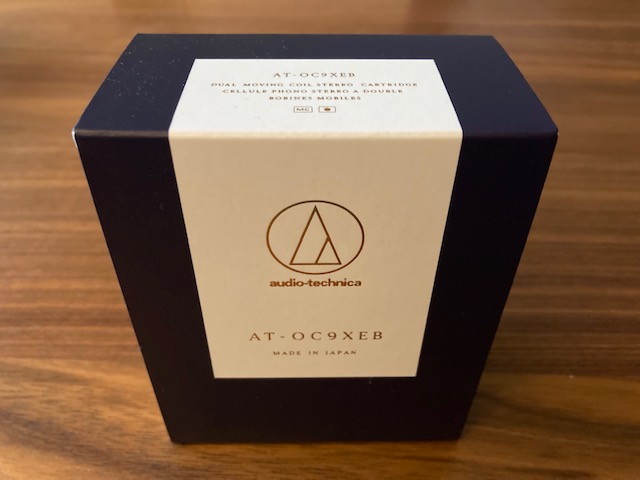
As far as phono preamp requirements go, the XEB needs around 60dB of gain and 100 ohms loading, which is basically the default setting for inexpensive moving coil units. If your integrated amp already has a built-in preamp with a MM/MC switch, chances are good you're good to go, so you won't need to spend a penny more. Why not give it a try, since it's already bought and paid for?
I'd forgotten the sublime joy that comes with setting up a cartridge fitted with a simple bonded elliptical stylus. While careful attention to setup benefits any cartridge, it's much easier to get this one in the ballpark right off the bat. That is, in fact, what happened to me with the XEB. I set the alignment, got it sitting level to record surface, then sat back and listened. Bingo. It sounded nice and balanced and perfectly enjoyable from the first album, as opposed to being merely a starting point for hours more fiddling to come. Looked at another way, the cheapest cartridge in the model range might also be the easiest to enjoy.
Right out of the gate, the XEB surprised me with its generous soundstage: a standout at this price point. It made me think that this was going to be a big-picture type cartridge that paints with thick, splashy dollops of bright color, but without fine brush strokes. Yet after a few hours, it became clear that the XEB also sorted out various strands of music with delineation and deftness I'd expect from a more exotic stylus profile. It's also a pretty quick and responsive ride, giving the sense that the only thing slowing it down are the cantilever and stylus.
All in all, there was more information retrieved than I would have expected for $259. But there's no such thing as a free lunch. While the XEB was mostly good at unraveling musical threads, it didn't offer the kind of true-to-life air and space around them that makes more expensive cartridges so immersive. This is almost certainly due to the limitations of the stylus. Also, it's passably quick sounding, but not responsive in the way a nude mounted stylus on a lighter cantilever would likely behave. Again, this is what the more expensive models in the range are for. It wasn't especially forgiving of surface noise, and sibilant pressings weren't helped any, either, but neither were they accentuated. Still, at the recommended 2 grams of tracking force, it went about its business with solid competence.
Generally, the XEB has a slightly warm-ish character, but with a sometimes splashy (and only occasionally sandy) treble. You can play with VTA and loading to your heart's content, but I always ended up with some version of a thumpy, dynamic but plump bass, a forward midrange plus a crisp high end. Somehow, it gelled. The XEB was gregarious in all the right places, but not sloppy or overbearing. I'd describe it as a compromise between big fun and above-average resolution. If you want more texture and breath-of-life realism, you'll want something like Grado's $275 Opus3 instead. If you want detail, detail, and more detail, Audio-Technica's $279 AT-VM540ML with MicroLine stylus will dig more out. But the overall balance of strengths on offer here was appealing; sometimes, less is more. Honestly, I'd be curious to hear this cartridge with an even more modest conical stylus, because I think it could be a Denon DL-103 alternative built for modern tonearms.
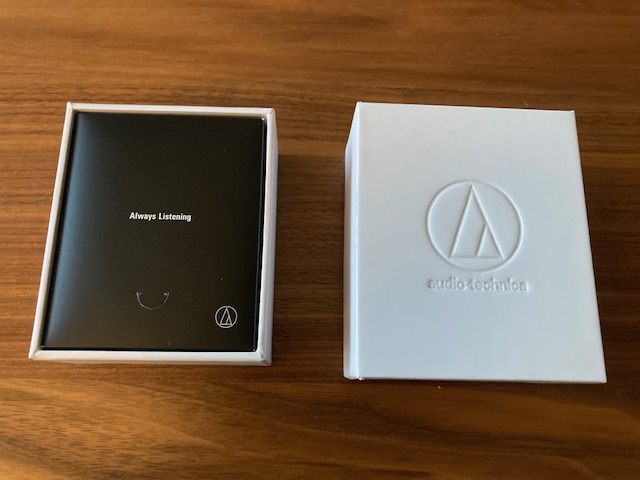
Despite a little warmth, the XEB still gave off a classic moving coil impression of analog-like digital, albeit a forgiving one. If you've ever owned an old CD player with a TDA1541 DAC chip, or one of the early Sony PlayStations that were all the audiophile rage awhile back, you'll know what I mean. If not, know that this is hardly a criticism. Perhaps this impression was magnified because I was coming off a review of Grado's $1000 Timbre Series Master3, a superbly delicate, lifelike, and graceful low-output, moving iron cartridge with a wood body. Apples and oranges.
Audio-Technica's cantilevers and styli always give me the impression of being just a little lighter and finer than their specs would suggest. In this case, an almost total lack of audible mistracking seemed to bear that out. I have no doubt the finer styli would do even better, but would there be a price to pay beyond dollars and cents? Certainly I've heard cartridge ranges that became sterner, leaner, more serious-sounding (and consequently, less fun) as I moved up the line from ordinary styli to exotic shapes. The XEB also behaves like a fairly compliant cartridge, and it was perfectly at home on a current Technics tonearm. That leads me to believe it would be fine in any medium-ish mass tonearm from a myriad of manufacturers.
For users replacing the standard-equipment cartridge on a mid-level budget turntable, this cartridge would likely be an impressive step up, if not quite a revelation. Compared to something like a $100-$200 moving magnet, this will almost certainly offer a more expansive presentation, sharper transients, some more air and a somewhat more electrifying character. I could only dream of something like this 30 years ago when I had to save up for replacement styli on the basic cartridges my early players were saddled with.
Of course, that doesn't necessarily mean you won't be happier with, say, a $239 Ortofon 2M Blue, let alone a $199 Audio-Technica AT-VM95SH. Today's affordable cartridges have a lot to offer and there's a stunning amount of variety considering we're well into the digital age. But considering how easy it is to buy–and return–cartridges these days from big sellers who don't ask a lot of questions as long as the item comes back to them looking new, it's worth exploring all available options.
Overall, the XEB sounds higher-end than I expected from the absolute cheapest low-output moving coil you can buy, even considering Audio-Technica's proven track record of overachieving cartridges. As I moved up the phono stage rungs from a few hundred bucks to a few thousand, the XEB kept on delivering. It has a lot to give. More importantly, it sounds better the higher you go with partnering equipment (to a point, anyway), as opposed to only revealing more shortcomings. Do you have a decent turntable with a medium mass tonearm? That's probably all you need to do it justice. Do you have a really expensive turntable, but you're suddenly cash strapped or feeling just plain cheap in light of today's economy? You might enjoy the XEB more than you think.
So, forget about the never-ending debate over moving magnets and moving coils. For $259, Audio-Technica's AT-OC9XEB deserves a listen. On paper, you can get more bang for your buck from a similarly priced moving magnet, even one of Audio-Technica's own. But the OC9XEB has a sizable soundstage, a clear and smooth character, generous tone, plus build quality and looks that walk all over some cartridges in the same price range with superior specs. It's not perfect, of course, but setup is easy and just about any phono stage with moving coil capability can accommodate it. Audio-Technica proves, yet again, they can produce compellingly musical products, even–and perhaps especially–at entry-level price points.
Specifications
- Type: Dual Moving Coil
- Body Material: Aluminum
- Frequency Response: 20-30,000 Hz
- Channel Separation: 25 dB (1kHz)
- Vertical Tracking Angle: 20°
- Vertical Tracking Force: 1.8-2.2 g (2.0 g standard)
- Recommended Load Impedance: Min. 100 ohms (when head amplifier is connected)
- Coil Impedance: 12 ohms (1kHz)
- DC Resistance: 12 ohms
- Coil Inductance: 25 mH (1kHz)
- Output: 0.32 mV (at 1 kHz, 5 cm/sec)
- Channel Balance: 1.5 dB (1kHz)
- Stylus Shape: Elliptical bonded
- Stylus Type: Bonded round shank
- Stylus Curvature Radius: 0.3 x 0.7 mil
- Cantilever: Aluminum pipe
- Static Compliance: 20 x 10-6 cm/dyne
- Dynamic Compliance: 9 x 10-6 cm/dyne (100 Hz)
- Wire Used for Coil: PCOCC
- Terminal Pins: Brass
- Mount: Half-inch
- Weight: 7.6 g (0.3 oz)
- Dimensions: 0.68" x 0.66" x 1.01"
- Accessories Included: Non-magnetic screwdriver; 2 washers; cartridge installation screws (5 mm × 2, 8 mm × 2, 10 mm x 2, 12 mm x 2); plastic protector; brush
- Mounting Feature: Threaded body
AT-OC9XEB Phono Cartridge
Retail: $259
Audio-Technica U.S., Inc.
1221 Commerce Drive
Stow, Ohio 44224
330.686.2600




